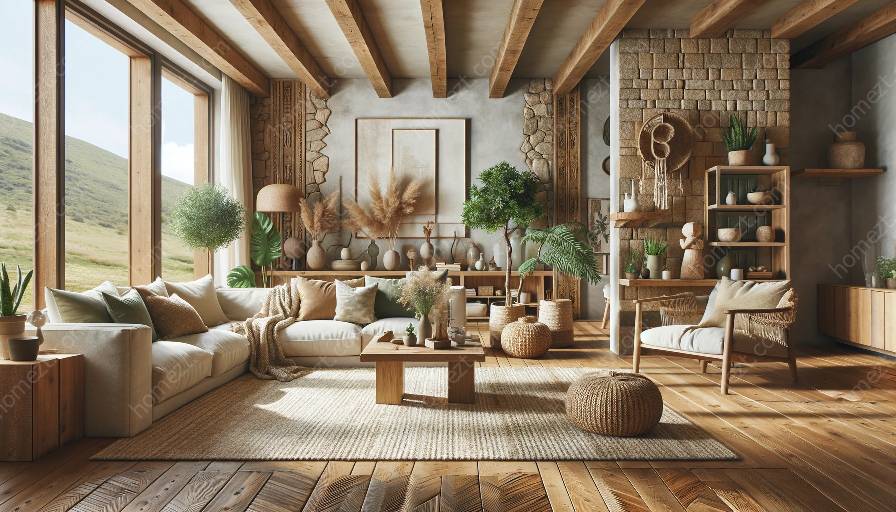Decorating with natural materials brings warmth, texture, and a sense of connection to the outdoors into your home. From wood and stone to textiles and plants, these materials offer a wealth of opportunities for creating unique decorative elements.
The Art of Repurposing and Upcycling
Repurposing and upcycling natural materials involve taking items that are no longer in use and transforming them into something of higher value. This eco-friendly approach not only reduces waste but also allows you to express your creativity and add a personal touch to your decor.
Wood
One of the most versatile natural materials, wood can be repurposed in countless ways to create unique decorative elements. Old wooden crates can be turned into stylish shelving units or side tables, while reclaimed timber can be fashioned into stunning wall art or furniture pieces. The natural grain and rich colors of wood add a timeless, organic feel to any space.
Stone
Whether it's salvaged bricks, reclaimed marble, or repurposed slate, stone can be upcycled to create striking decorative elements. Consider using old stone tiles to craft a mosaic table or repurpose granite slabs as elegant kitchen countertops. The varied textures and earthy tones of stone can bring a sense of rustic charm to your decor.
Textiles
From vintage fabric scraps to worn-out denim, textiles offer endless possibilities for repurposing and upcycling. Transform old sweaters into cozy throw pillows, repurpose vintage linens as unique wall hangings, or weave discarded t-shirts into colorful rag rugs. Incorporating these repurposed textiles into your decor adds a touch of history and personality to your home.
Plants and Natural Fibers
Bringing nature indoors is a timeless way to enhance your decor. You can repurpose glass jars as stylish planters, upcycle wine bottles into stunning vases, or use driftwood to create captivating natural sculptures. Additionally, natural fibers such as bamboo, jute, and sisal can be repurposed to craft decorative baskets, rugs, and lampshades that infuse your space with organic beauty.
Practical Tips for Upcycling Natural Materials
When it comes to upcycling natural materials, a few practical tips can guide your creative endeavors:
- Seek Inspiration: Look for design ideas and tutorials to inspire your repurposing projects. There are countless resources online and in design books that showcase innovative ways to upcycle natural materials.
- Embrace Imperfections: The beauty of upcycled decor lies in its character and history. Embrace the imperfections and unique features of repurposed materials, as they contribute to the charm of your decorative elements.
- Consider Sustainability: Prioritize using materials that are sustainably sourced or salvaged from discarded items. This eco-conscious approach adds an ethical dimension to your decor while reducing environmental impact.
- Customize with Care: As you repurpose and upcycle natural materials, consider tailoring the design to suit your personal style and the existing aesthetics of your home. Customizing with care ensures that your decorative elements blend seamlessly with your decor.
Enhancing Your Decor with Repurposed and Upcycled Elements
By repurposing and upcycling natural materials, you can infuse your living spaces with a sense of individuality, eco-friendliness, and creativity. Whether you choose to transform wood, stone, textiles, or plants, the unique decorative elements you create will undoubtedly add character and charm to your home.






































